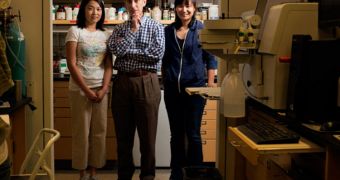Stephen J. Lippard, a chemistry professor at the Massachusetts Institute of Technology (MIT), announces the development of a new type of platinum-based cancer drug, which he says could prove effective against a wide array of tumor types.
The first platinum compounds for treating cancer were approved more than 34 years ago, most notably cisplatin. The substance is the most commonly-used, platinum-based, anti-cancer drug today. However, many types of tumor cells are beginning to show resistance to the chemical.
According to Lippard, this is not an issue of the drug losing its efficiency, or of its active ingredient being rendered impotent. In fact, he is convinced that there is something special about platinum that cancer cells simply do not like.
However, figuring out what that is, and how to amplify it, is a very complex task, one that the newly developed compound takes on. Interestingly, the new chemical has also proven effective at killing cancers resistant to cisplatin.
The MIT expert is convinced that developing new variants of established, platinum-based compounds is a major avenue of moving forward in the field of oncology. Details of his work appear in the latest issue of the esteemed journal Proceedings of the National Academy of Sciences (PNAS).
According to Lippard, the senior author of the paper, the new drug variant is called phenanthriplatin. The expert carried out the work together with postdoctoral researcher and lead author Ga Young Park.
At this point, the MIT group is carrying out a series of animal tests, meant to determine how efficiently the compound spreads through living organisms. They also want to study various mechanisms for distributing the chemical, and to establish its proper dosage.
Depending on the results of these investigations, the team will determine whether to modify the chemical ahead of human clinical trials, or not. If everything goes smoothly and no major interventions are required, then the chemical could make its way to the market in under 5 to 10 years.
Phenanthriplatin “expands the utility of platinum drugs and avoids some of the problems that existing drugs have,” comments Louisiana State University chemistry professor Luigi Marzilli, who was not a part of the new research effort.

 14 DAY TRIAL //
14 DAY TRIAL //